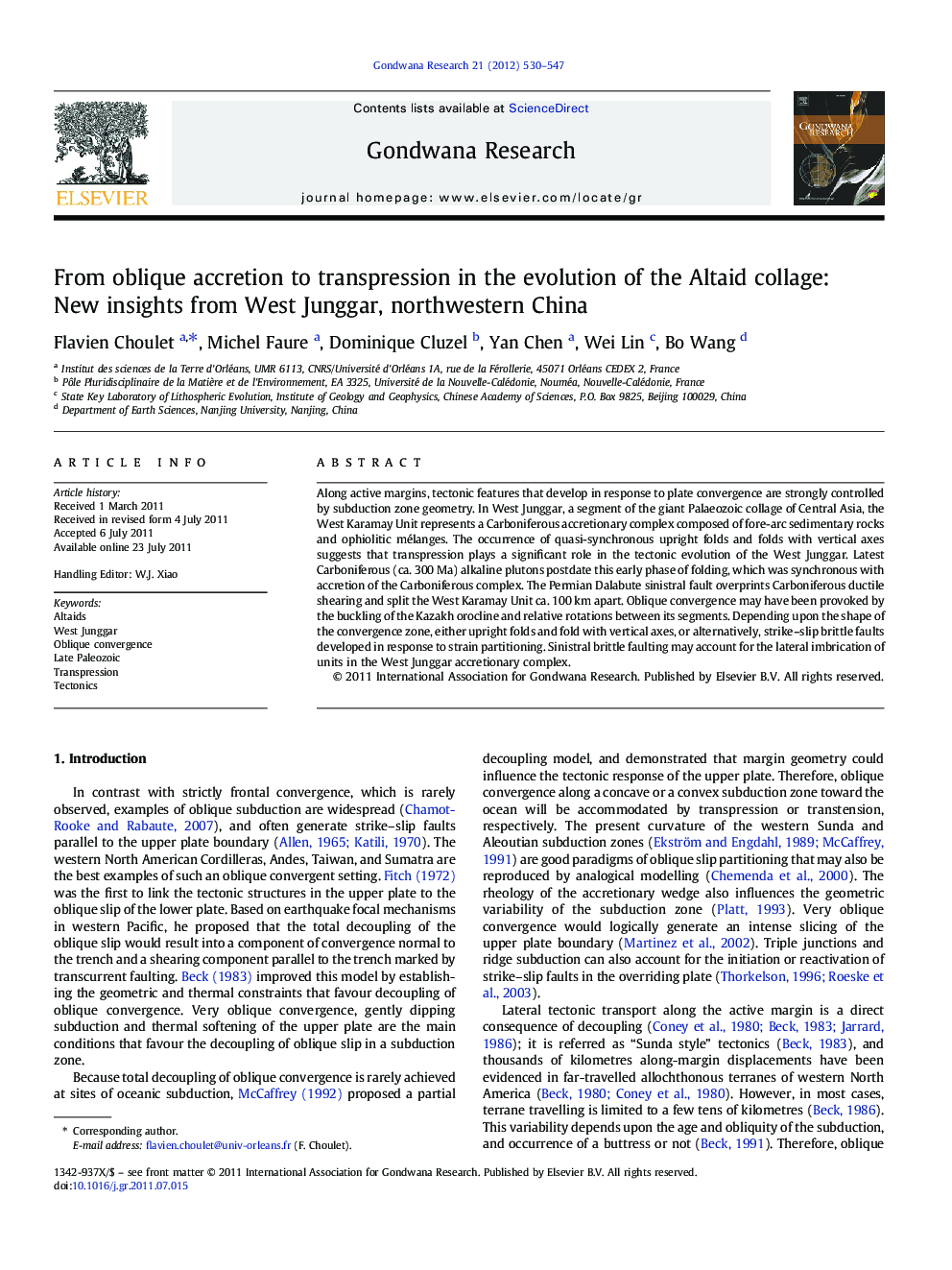| کد مقاله | کد نشریه | سال انتشار | مقاله انگلیسی | نسخه تمام متن |
|---|---|---|---|---|
| 4727609 | 1640145 | 2012 | 18 صفحه PDF | دانلود رایگان |

Along active margins, tectonic features that develop in response to plate convergence are strongly controlled by subduction zone geometry. In West Junggar, a segment of the giant Palaeozoic collage of Central Asia, the West Karamay Unit represents a Carboniferous accretionary complex composed of fore-arc sedimentary rocks and ophiolitic mélanges. The occurrence of quasi-synchronous upright folds and folds with vertical axes suggests that transpression plays a significant role in the tectonic evolution of the West Junggar. Latest Carboniferous (ca. 300 Ma) alkaline plutons postdate this early phase of folding, which was synchronous with accretion of the Carboniferous complex. The Permian Dalabute sinistral fault overprints Carboniferous ductile shearing and split the West Karamay Unit ca. 100 km apart. Oblique convergence may have been provoked by the buckling of the Kazakh orocline and relative rotations between its segments. Depending upon the shape of the convergence zone, either upright folds and fold with vertical axes, or alternatively, strike–slip brittle faults developed in response to strain partitioning. Sinistral brittle faulting may account for the lateral imbrication of units in the West Junggar accretionary complex.
Figure optionsDownload as PowerPoint slideHighlights
► Transpression and sinistral kinematics from West Junggar accretionary complex.
► Tectonic response to a Carboniferous oblique subduction related to Kazakh orocline.
► Strain partitioning of oblique convergence results in lateral imbrication of units.
Journal: Gondwana Research - Volume 21, Issues 2–3, March 2012, Pages 530–547